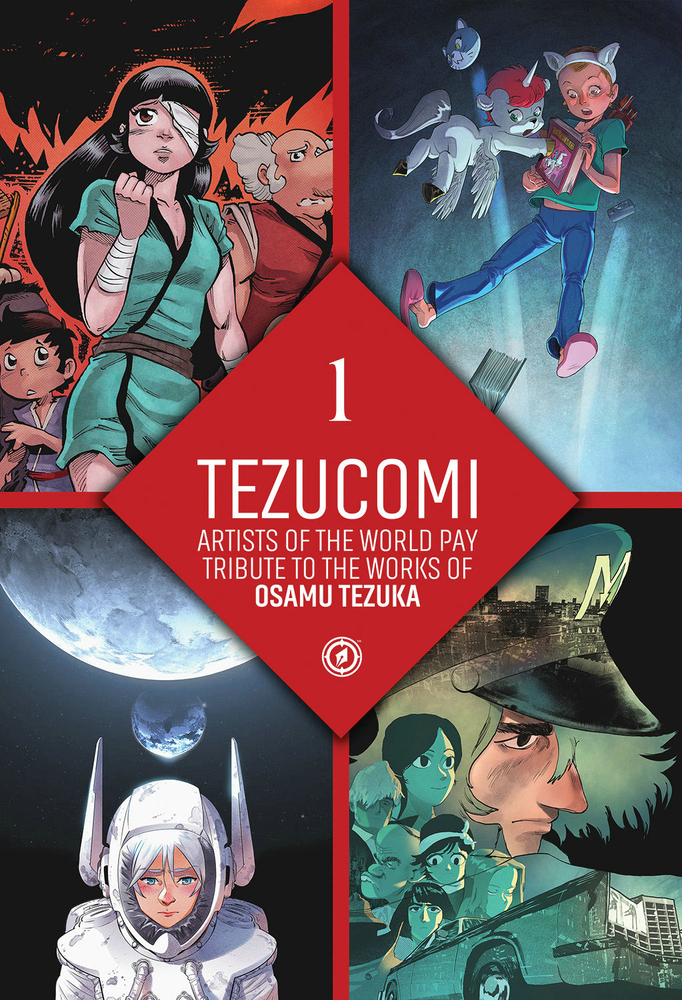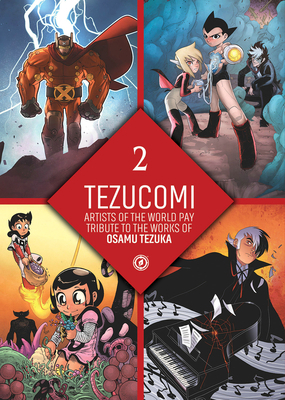Manga Review: Tezucomi Vol. 1 & 2 by Various Creators
2023 would have been Osamu Tezuka’s 95th birthday year, and in commemoration of the great manga and anime creator, this series was commissioned to show other artists’ take on his famous (and not so famous) works. For reasons, most of these were French and Spanish creators who had to learn how to create stories that read right to left for the Japanese market.
Disclaimer: I contributed to the Kickstarter to have these volumes published in English. I have no other connection to the enterprise.

The first story in this volume is “The Mouse” written by Elsa Bordler with art by Sourya. It’s based on Ayako, which I reviewed some years back. To quickly recap, it’s a crime thriller about a girl/young woman kept captive by her family for years to conceal a crime one of them committed. This story takes place during that long captivity as Ayako discovers she’s not as alone in her room as she thought she was. (Content warning: Incest, death of an animal.) The emphasis here is on Ayako’s fragile mental state as the years of solitude prey on her mind. What she experiences may not be real.
The final story is “Catalante” by Mig. This is based on Unico, a manga series in which a unicorn is cursed to be taken from place to place and help people with his love, only to have his memories erased when he is moved again. A dying girl wants to see the last volume of her favorite fantasy series, “Catalante”, but the author has stopped writing due to a family tragedy. Unico can’t fix terminal illness with his magic powers (just putting it into remission for a hour or two is an enormous strain) but perhaps there is another way he can help? The ending is bittersweet–Unico was able to help, but he will never remember it.
The most interesting of the stories in between from a technical perspective is “The Moon Rabbit” written by Valerie Mangin, art by Brice Cossu. It’s related to Buddha, Tezuka’s retelling of the life of the great teacher and religious figure. It’s a silent story in which a young person on the moon who wears a rabbit mask yearns for something more and gazes at the Earth. Perhaps his wish is granted, thanks to the Buddha? This one requires careful parsing, but working without dialogue is a challenge for comics writers.

This volume begins with “Big X” by David Lafuente, based on Tezuka’s Big X. This one was a bit closer to a standard superhero narrative of the American kind as young Akira Asagumo takes a super-soldier serum his grandfather had developed near the end of World War Two to keep it out of the hands of Neo-Nazis and also to fight their evil. In this story, an enormous asteroid is on a collision course with Earth, and all other space missions to stop or deflect it have been destroyed. Only the Japanese mission with Big X aboard is left to save the day. But can even his mighty powers allow him to survive what needs to be done? Well, this is pretty much a straight-up superhero story.
The final story is “Phoenix Force” story and art by Kenny Ruiz. This one is a team-up of several Tezuka heroes and new character Fire (who is loosely inspired by the Phoenix from the Phoenix series.) They are battling the tyrannical Union of Robots, which has enslaved the humans and subjected them to “existence permits” that can be revoked at any time. But the Governor of the Union is Astro!? The most kind-hearted and human-loving of robots? How can this be? And who is the mysterious Patient Alpha? This one very much reads like the first chapter of a superhero team comic book of the modern era.
The most interesting story in between for me is “Princess Knight” by Elsa Brants, based on Princess Knight, which I have also previously reviewed. As long-time fans will remember, Sapphire was born with both male and female “hearts”, biologically female but socially male. This made her (she eventually settles on those pronouns) one of the first genderfluid characters in manga. Another character, Hecate, was created by the evil witch Madame Hell to be her daughter and marry a prince so that Hell could live at her ease in a palace. Though girl-shaped, Hecate had no “heart” at all, and is thus in effect agender. Her mother wants to steal Sapphire’s female heart to place in Hecate and make her properly feminine.
Osamu Tezuka was ahead of his time on gender matters for the 1950s, but seventy years later, we have learned a lot more. This story reimagines the first meeting of Sapphire and Hecate with a more modern understanding of gender, while still keeping it light enough for tween girls to enjoy.
Dr. Black Jack (I’ve also reviewed one of his volumes) gets quite a workout in these volumes, getting two stories of his own, being in the big team-up, and making surprise crossover visits in a couple of others.
Before each story, there’s a brief recap of the manga they’re based on, and afterwards mini-interviews with the creators. Perhaps you’ll find a new favorite?
Only a couple of these stories stand entirely on their own, so a familiarity with Tezuka’s originals is highly recommended. That said, this is a great way to see some of the breadth of genre and styles that the master produced, and some of the manga don’t have English editions, so this is the fastest way to learn about them.
Recommended to people who’ve enjoyed at least one Tezuka-created manga or anime series.

